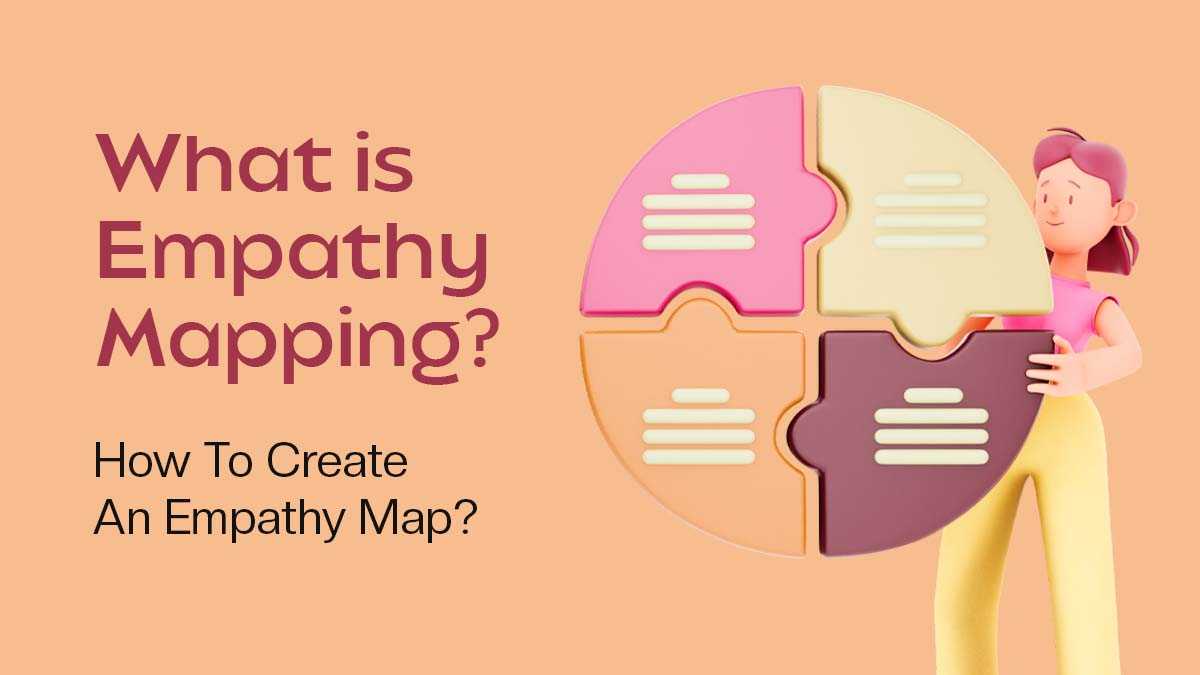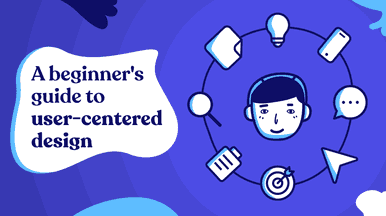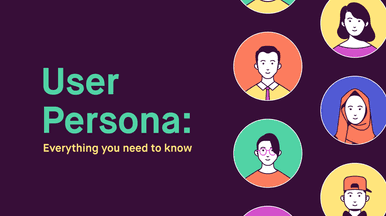So, you came here to learn more about Empathy Mapping, one of the most powerful tools in UX design. Let us share some insights that can help you on your quest.
Empathy mapping! It’s like a crystal ball that helps designers see into the minds of their users. I mean, it’s not really magic, but it feels like it sometimes!
With empathy mapping, designers can get all up in the heads of their users, figuring out their wants, needs, thoughts, and feelings.
It’s like being a psychic, but instead of reading minds out of thin air, you’re reading people’s minds through research (with their permission, of course).
And the best part? By understanding what users really want, designers can make products and services that are so good they practically sell themselves. It’s like the design equivalent of a mic drop!
So, if you want to create designs that are user-centric and meet people’s needs, you gotta start with empathy mapping. It’s like a secret weapon for UX design – but not really a secret because I just told you about it. And now you know.
What is Empathy Mapping?
The definition of an Empathy Map is like this: an easy-to-understand visual map that condenses details about a user’s behavior and points of view. It is a valuable tool that enables teams to understand their users better.
Creating an Empathy Map is a simple workshop activity that can be carried out by marketing and sales, development and design teams, creative teams, and stakeholders to foster empathy for end customers.
When creating a solution for the users, it’s critical to understand their real problems and the feelings of the person experiencing them.
Through empathy mapping, teams can develop their ability to consider circumstances from the user’s viewpoint, including their goals and issues.
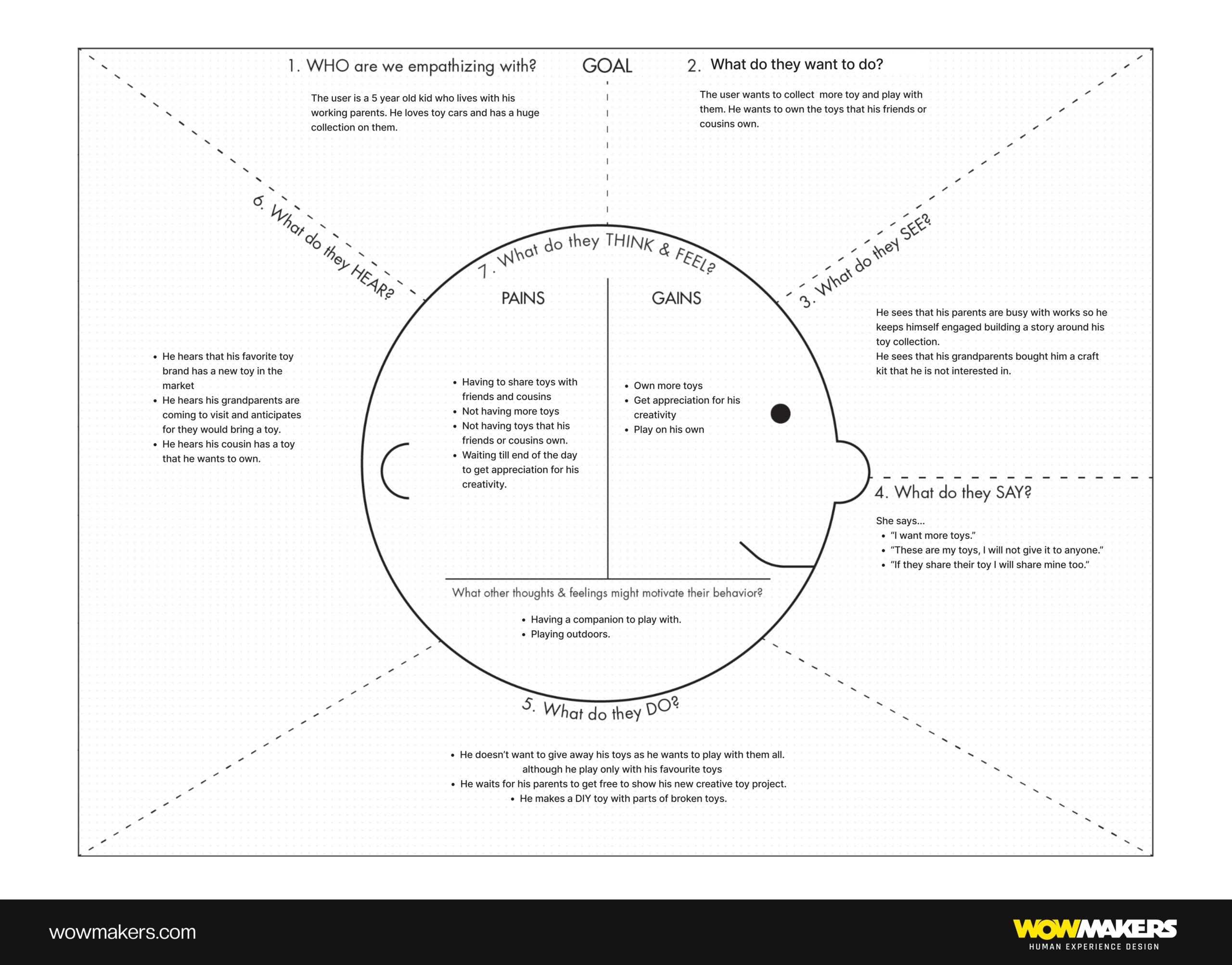
(Here is an Empathy Map we did for one of the case studies)
Download the Empathy Map Here
What’s There Inside an Empathy Map? How Does it Help Understand User Personas?
An empathy map resembles a simple chart or diagram, with four quadrants/elements representing different aspects of the user’s or customer’s experience.
The quadrants are labeled with headings that correspond to the empathy map’s key sections:
“Says”: This quadrant represents the user’s or customer’s spoken words and includes direct quotes describing their experiences, feelings, and thoughts about the product or service under consideration.
“Thinks”: This quadrant represents the user’s or customer’s internal thoughts and includes insights into their attitudes, beliefs, and assumptions about the product or service are designed.
“Feelings”: This quadrant represents the user’s or customer’s emotions and includes information about their reactions, moods, and sentiments about the product or service is designed.
“Does”: This quadrant represents the user’s or customer’s actions and includes information about their behaviors, habits, and interactions with the designed product or service.
Each quadrant may include more details or sub-sections to expand on the user’s or customer’s experiences and insights.
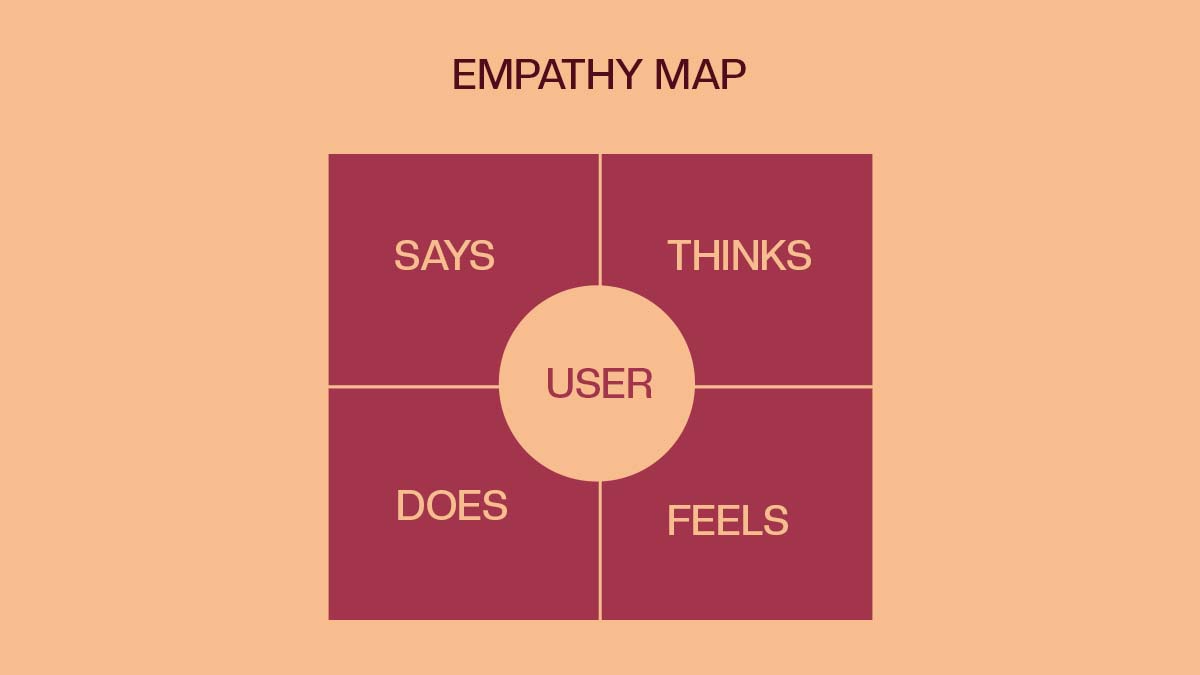
Explaining the Elements of an Empathy Map
The Empathy Mapcomprises four major components:
- Thoughts and feelings;
- Needs and Values;
- Environment and Influences; and
- Behaviors and Actions.
Thoughts & Feelings
This element aids in the mapping of users’ internal emotions and mental states. It assists in determining what they may be thinking or feeling when interacting with a product or service.
Questions such as “What are they feeling emotionally?” and “What kind of thoughts go through their heads?” can assist in eliciting these emotions.
Needs and Values
This component addresses why users engage in specific actions or behaviors. Understanding what is most important to them will help inform design decisions to ensure that needs are met.
“What do they need from this product/service?” and “What are their core values?” questions can provide helpful insight into how to best meet user needs and values.
Environment & Influences
This element addresses external factors influencing user behavior, such as the environment, culture, technology, etc.
Understanding these influences can assist in developing a more holistic understanding of user experience and identifying potential opportunities to serve user needs better.
Questions such as “Where do they use our products/services?” and “What technology do they use?” can provide valuable insight into external influences on user behavior.
Behaviors & Actions:
This component investigates usage patterns and behaviors resulting in user interactions with a product/service.
To make better design, questions like “How often do they use our product/service?” and “How do they react when something doesn’t work as expected?” can provide deep insight into usage patterns and behaviors associated with a given product/service.
Why Use Empathy Maps?
- Empathy maps should be used in every UX phase to foster team consensus and prioritize user needs. E.
- It assists creators in broadening their horizons and in realizing that consumer viewpoints could diverge from those of the ideal product they envision.
- Beyond the research phase, empathy maps improve user experience design. Later design and development stages like prototyping, mocking up, and testing may use them as a tool or a guide.
- The visual nature of empathy maps encourages creativity and collaboration within teams, making them an effective tool for discussing the customer experience journey.
- Empathy maps replace personal insights with data from field surveys to produce an accurate portrayal of your marketing persona. It implies that they are a trustworthy source of information.
- This universal tool can be applied to any industry, market, or corporation.
Who Uses Empathy Mapping?
An empathy map is a useful tool employed by many professionals, such as UX designers, marketers, product owners, customer service representatives, and many others.
Those who use empathy mapping often aim to gain deeper insights into their customers’ or users’ actual behaviors and emotions about the products or services they provide.
Empathy maps can identify potential opportunities and pitfalls that could arise from a customer’s experience with the company, allowing for proactive problem-solving rather than reactive approaches.
The process of creating empathy maps involves exploring the perspectives and feelings of customers across all channels.
By collecting data from interviews, surveys, and other sources – then organizing it into an organized visual form – teams can understand how customers think and feel about their brand interaction and what drives them to act on it.
Through this method, teams can gain valuable insight into how customer needs may evolve to anticipate future demands and adjust strategies accordingly.
With this information, teams are better equipped to create more effective products, services, or marketing campaigns that effectively target those needs while providing high satisfaction.
Step-by-step Process of Creating an Empathy Map

#Step 1 – What’s The Ultimate Goal and Objective?
In empathy mapping, defining goals and scope is critical for successful product development. By defining goals and scope, teams can ensure that they focus on the right objectives and users throughout their research and design process.
Goals help to provide direction and structure, while a well-defined scope ensures that everyone involved in the project understands the problem and who should be applied.
It is critical to have this clarity upfront to ensure that stakeholders are aligned, research is conducted with the appropriate people, and data points are collected to tell a meaningful story.
The goal-setting process also assists teams in better understanding user needs by providing focus, allowing them to ask open-ended questions without becoming bogged down in irrelevant topics or data points.
Furthermore, having clearly defined goals and scope enables teams to effectively budget their resources throughout the product development journey, including any necessary changes along the way.
These elements work together to form a solid foundation for successful product design that meets user needs now and in the future.
#Step 2 – Data, The Sole Reason!
Compile relevant data. Begin by gathering information from your target audience. This can be accomplished through surveys, interviews, or focus groups.
At this stage, collecting information about the target audience’s needs and desires is critical to understand what motivates them.
Here are some examples of how data is collected
Data from the research: Empathy mapping frequently precedes research that provides data on the target user or customer group. This research can provide information on the users’ needs, behaviors, attitudes, and motivations through surveys, interviews, focus groups, or ethnographic studies.
Observational data: Observational data can be collected by directly observing users or customers in their natural environments. This type of data can assist in identifying patterns and behaviors that other research methods may miss.
Customer feedback: Customer feedback can be a valuable data source for empathy mapping. This feedback, which can be obtained through surveys, reviews, or customer service interactions, can assist in identifying pain points, challenges, and areas for improvement.
Analytics data: Data derived from website or app usage can reveal how users interact with digital products. This information can be used to identify areas where users are having difficulty, as well as patterns in their behavior.
#Step 3 – Persona, the Soul of an Empathy Map.
The next step in empathy mapping is to analyze the data after it has been gathered through research, observational data, customer feedback, and analytics data.
This entails determining what patterns emerged from the collected data and what information can be extracted.
User personas can be created during this process. User personas are fictitious representations of potential users based on data collected.
They contribute to a better understanding of the typical behaviors, needs, goals, and challenges of potential users of a product or service.
It is critical to include both quantitative and qualitative information about user personas when creating them.
Demographics (age, gender, occupation), psychographics (interests, attitudes), communication preferences (how they prefer to receive information), and goals/objectives are examples of such characteristics (what they intend to achieve).
User stories can also be included, which help paint a complete picture of users’ experiences while using specific products or services.
After gathering all this information about users’ needs and motivations, designers can start piecing together user personas that represent different types of users who might use their product or service.
These personas should include detailed descriptions of their behaviors and needs and information on how they interact with the product or service under consideration.
Designers can begin designing an experience tailored specifically for each persona based on their unique needs and preferences once these user personas have been created with relevant details derived from collected data points.
#Step 4 – Visualizing User Empathy.
Following collecting and analyzing all the necessary information on the target audience segments, brainstorm effective ways to communicate how they feel using visual elements such as diagrams or charts demonstrating how they perceive various situations or products/services related to your brand or industry.
However, remember that empathy mapping is a UX tool, not a means of imposing a shift in corporate mindset.
Sharing map graphics won’t translate into a sudden zeal for user focus if it isn’t a part of the overall corporate culture.
The purpose of the exercise is to get people to put the user first. If the participants report that the activity impacted them, consider it a success.
#step 5 – Review What’s Gained and Adress Those Who Participated.
After the empathy mapping session, it is critical to take some time to reflect on what was learned. First, it is essential to review the mapping results and discuss any potential implications or next steps.
For instance, if a critical takeaway from the empathy mapping is that a specific group of customers is frustrated with a product feature, brainstorming potential solutions may be required.
To ensure accuracy, the results of the empathy mapping could also be compared to actual customer feedback.
It may be helpful to document and store the results of the empathy map after reflecting on and discussing them. This way, they can be easily accessed when needed later.
It is also necessary to thank everyone who contributed during the session. This will not only show your appreciation for their efforts, but it may also help you build relationships in the future.
Finally, it may be worthwhile to check in with stakeholders to ensure that they have seen and comprehended the results of the empathy map.
This will ensure that everyone is on the same page about how to proceed and understands why certain decisions are being made based on customer feedback.
User feedback can help inform product development decisions and keep teams focused on user needs, resulting in better products for customers.
Tips for creating Empathy Maps
Here are a few tips that can make the complete process of empathy mapping simpler and more effective for you:
Don’t Let The Differences Consume You.
Some participants could be anxious about placing things in the “right” quadrant if various teams for the same user create different maps.
There will be differences in how multiple individuals categorize things. It’s okay! Instead of precisely classifying information, the goal is to establish a connection with the user.
Gather as Much Data as Possible.
An empathy map is only as good as the data it’s based on, so take the time to dig deep. I
interview members of your target audience or survey them; observe their behavior; seek out relevant reviews or comments from social media; investigate demographic information; pay attention to industry trends…the more data you have, the better!
Only Concentrate on User Perceptions That are Crucial to The Project’s Goal.
It is unnecessary to record every aspect of the user’s emotional and behavioral state for this activity.
Focusing on your intended audience will help you better understand how your writing fits into his or her world.
Do Proper Research.
Once you have all your research gathered, hold a workshop with all team members involved in developing the product or service being mapped out.
During this session, have each person share any insights they may have gleaned from their research experience, discuss common trends among user responses and brainstorm ideas for how best to represent these ideas in an empathy map format.
Adapt the Map to Your Needs and Environmental Conditions.
The categories should be modified or made simpler to meet the session’s goal, persona, or data.
For instance, the research may not have shown or been pertinent to feelings if the persona is a buying manager at a B2B organization. Make any necessary modifications to ensure a successful session and a satisfying conclusion.
Bring in The Team Members
Before starting work on the final empathy map draft, set aside time for everybody to sketch out key elements they would like included (e.g., thoughts/feelings boxes, user actions/behaviors).
Each individual should take ownership of specific areas — this will encourage team collaboration while ensuring each participant plays an integral part in fleshing out all aspects of the empathy map collectively as a group effort rather than having one person do most of the mapping work alone.
Discussion at Any Phase is Good
Make sure that after each iteration, there is a discussion about whether or not all components were captured correctly — changes can always be made before finalizing everything and presenting it internally or externally (e.g., investors), depending on the type of project you are working on!
One-User vs. Multiple-Users Empathy Maps
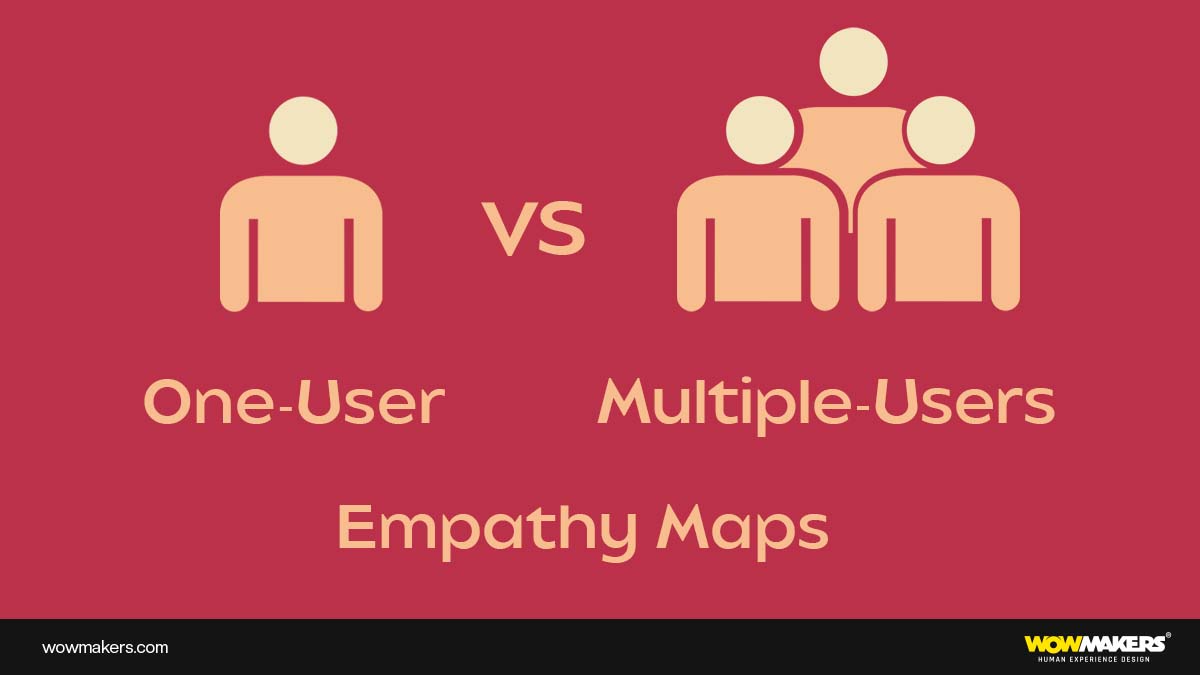
A One-User Empathy Map helps understand one person’s feelings, needs, and perspectives on a topic or project.
This mapping helps people understand how their thoughts and emotions affect their actions. The map gives designers and researchers insights into the user’s experience that surveys and interviews cannot.
The four sections of a One-User Empathy Map—Thoughts, Feelings, Needs, and Actions—describe their project or subject experiences. Users can state their thoughts, feelings, requirements, and actions in each section.
After identifying these components, it becomes easier to develop creative solutions that address user concerns and meet project goals.
A Multiple-Users Empathy Map collects data from multiple users with different perspectives on a project or topic rather than one person’s thoughts and feelings.
This research finds commonalities in customer service experiences and product design features across groups.
Multiple-Users Empathy Mapping allows researchers to identify patterns between user types by analyzing data from each group separately and in comparison to others.
Also, this mapping lets designers understand how different cultures view your product or service.
Limitations of Empathy Mapping
- Subjective data limit empathy mapping. It can help understand customer behavior but cannot test and validate hypotheses.
- While qualitative data can be collected, empathy maps cannot be quantified. This makes it challenging to evaluate mapping-inspired changes.
- Empathy mapping is time-consuming and resource-intensive. Interviewing customers for qualitative data can be difficult, especially if many stakeholders are involved in identifying user needs.
- Finding commonalities across users is difficult and time-consuming because customer feedback is often highly individualistic.
- Empathy mapping interprets customer data using human judgment.
- Qualitative data can provide a more complete picture than quantitative methods alone. Still, human bias and errors can lead to incorrect conclusions about customer needs and preferences.
Empathy mapping decisions may not accurately reflect customer needs or wants.
Key takeaways
The ability to comprehend user habits and propose solutions to problems separates good designers from remarkable ones.
A fantastic product will be produced by imagining what the user would feel, think, say, and do and then developing the product to meet those demands.
Empathy mapping is a tried-and-true method for improving the understanding of a client or user and communicating that understanding to the design team.
This method ensures that the user is put first in creating the product. Have you ever tried it? If not, it’s time to leverage this significant step in your design process.
